“Do you know I have a YouTube channel?”
It doesn’t surprise me anymore when kids under ten say this. As they start to play video games, playthroughs are entertainment, and gamers their heroes. “Don’t forget to subscribe” and “follow me on Twitter” are the new playground goodbyes in some circles. Even YouTube seems old school now as Instagram and TikTok take over the space of influencers and key opinion leaders (KOLs).
As someone who rarely uses her kids’ names online, the issue of privacy immediately sets off little alarms in my head when six-year-olds tell me their channel names. Yet creating content online offers kids a great way to learn new talents, including photography, video production and editing, and storytelling. I asked parents, teenagers, and influencer Sally Tian how kids can express themselves creatively online while also keeping themselves safe from trolls and predators.
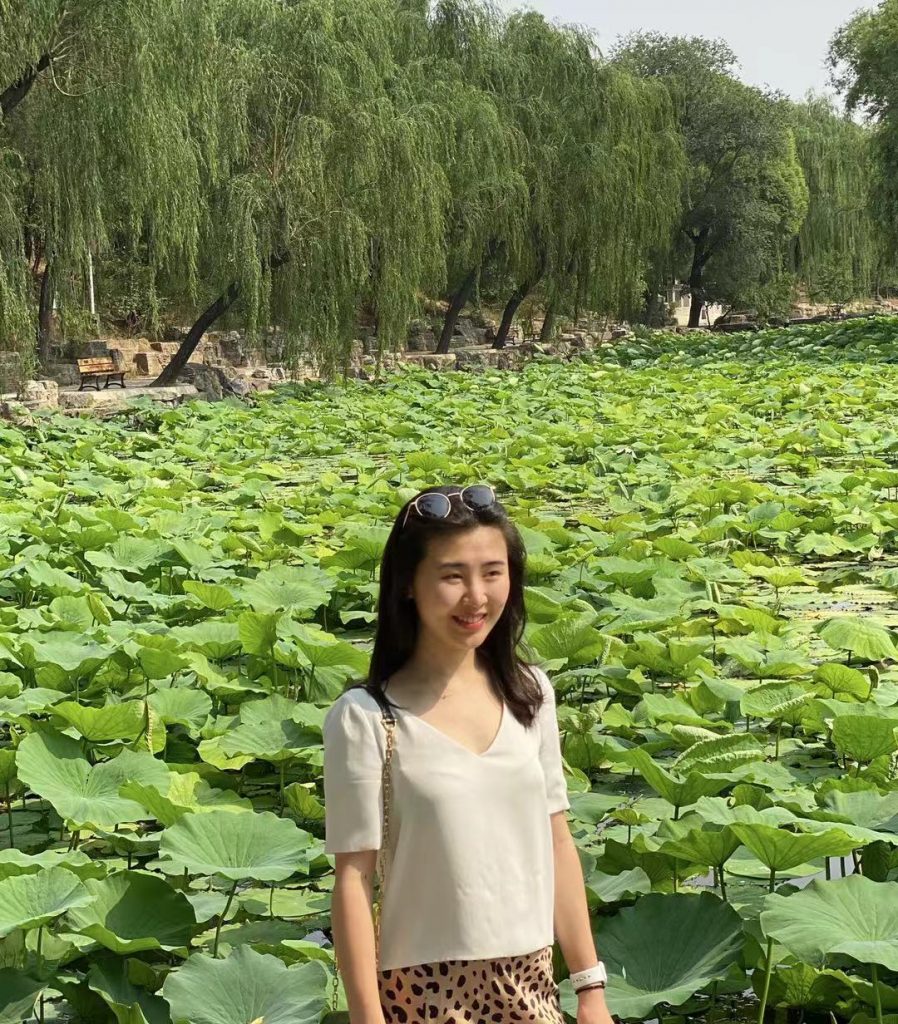
Sally Tian is a recreational blogger, influencer, and works in the entertainment industry.
Tian says that teaching kids the lessons they need to be strong digital citizens “can only be done by creating a really healthy environment at home and instilling a sense of self-worth in kids that is separate from their looks, the number of followers they have, and where they have traveled to or what shoes and bags they have.”
Having been through the influencer model herself, Tian leaves all parents with some great advice on approaching content creation as an ongoing conversation. “If children grow up believing their worth is tied to their intelligence, character, and they have a strong support system at home and with healthy friends, I think they can avoid the superficiality of social media while enjoying the benefits of digital citizenship.”
Let’s see how some parents and teens talk about it together.
The Tik Tok Teen
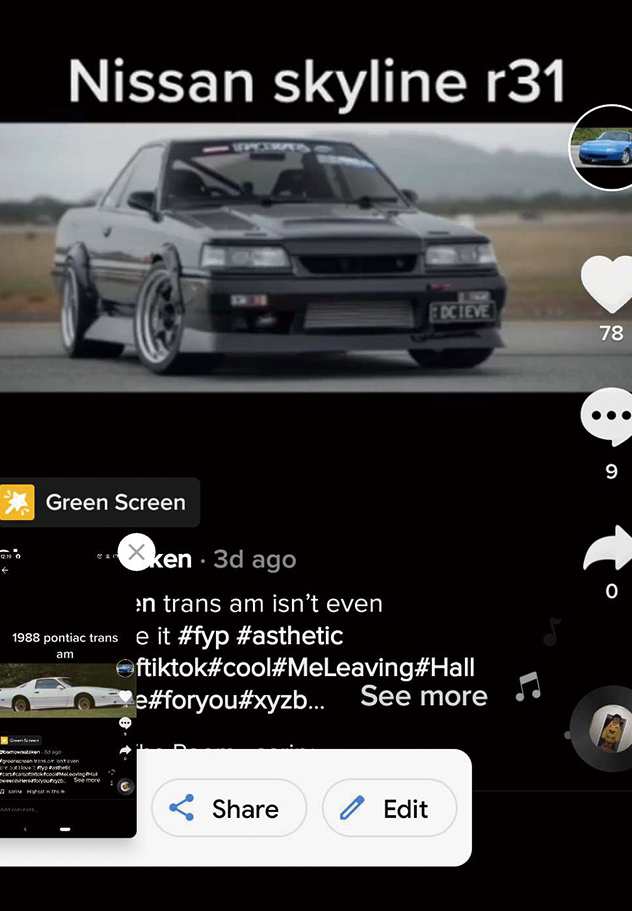
This 12 year old moved his obsession with cars online during quarantine.
Author Andi Dien and her 12-year-old son talked in detail before he started a TikTok account over the summer, where he mostly shares stories about cool cars. “I’ve always had the viewpoint that it’s better to be open about the dangers of online activity rather than prohibit or limit access. We’ve had a lot of conversations over the years about things that can go wrong when you put yourself online.”
She checks his account weekly, and he doesn’t post personal information or engage with any suspicious accounts. They also set a strict rule not to post pictures of family members, though she jokes that as a teen “he has no interest in doing this anyway.”
Instagram Offers Dolls a New Life
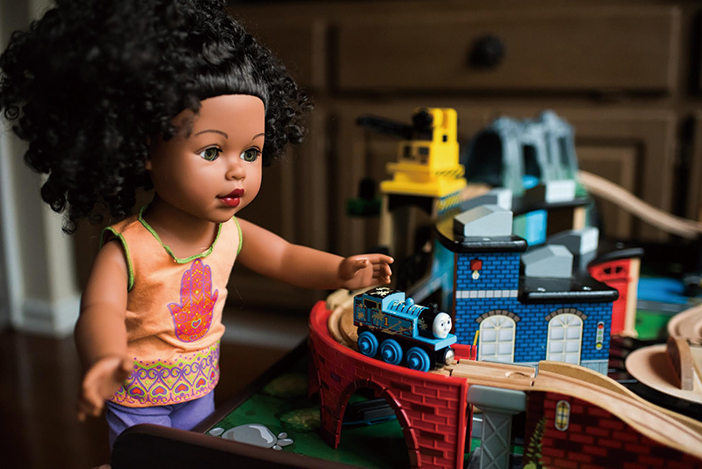
Her photos are so cute, it makes me want to photograph dolls too!
Christina Dorn McKeeby, the mom behind @glutenfreefamilyadventures and a photography business, saw her eight-year-old daughter’s interest in photographing her dolls as a natural progression of watching her parents work.
“Her account is set up on my phone, which allows me to have control over the time she uses it as well as access to her account. We also create content together and discuss appropriate photos and text to use. Her images are solely of doll fashion. She is not allowed to post personal images or information about herself,” McKeeby says. When people do send suspicious content, they tackle it together: “We do not shield her from these messages but instead use them as an opportunity to teach her how to block and report inappropriate material.”
This Beijing Teen Just Wants to Have Fun

Beijing teenager Ava Komons posts photos like the one above to her Instagram account to have fun and stay in touch with her friends from all over the world. She understands how careful she needs to be, even setting her account to a Business one to control who can message her. “I stay away from posting pictures of me or my friends in any less clothing than would be allowed at school. I keep my content friendly for all my followers, young or old. I have not gone through precautions to protect my identity in terms of my name or where I live, but I never post personal information like my address or phone number.”
Even though Komons is an ambassador for an athletic wear company, she still gives her own self worth great consideration. “I have made sure to not make my happiness depend on likes or followers. I don’t want to fall down a path that causes me to be dependent on social media to make me feel valid.”
Lessons Learned Allow Valeria to Just Be Herself
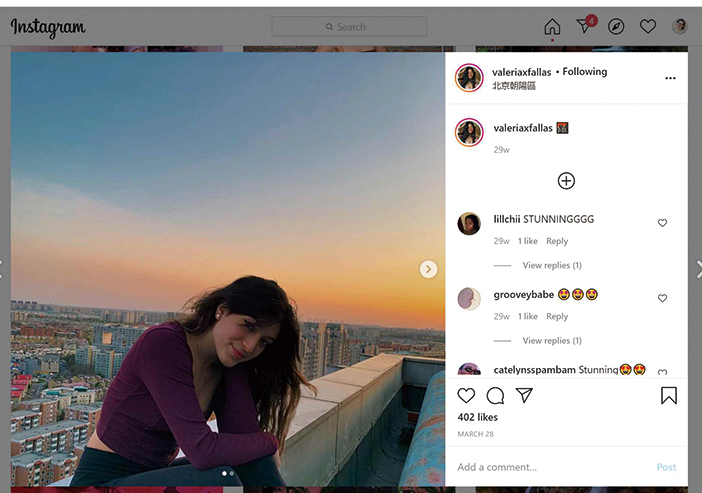
Student Valeria Fallas knows the dangers of being a public figure firsthand, from when her Instagram account was public. “I would get a lot of people making fake accounts with my pictures on them. I was hurt and frustrated with how other people were portraying me to be and using my pictures to lie and manipulate others. Because of these incidents, I changed my account to private.” She still has over 2,000 accounts following her adventures in Beijing, and more safely now.
KEEP READING: Screen Time Isn’t All Bad: Lessons to be Mined From Mario, Minecraft and More
Photos: Courtesy of Andi Dien, Christina Dorn McKeeby, Ava Komons, and Valeria Fallas
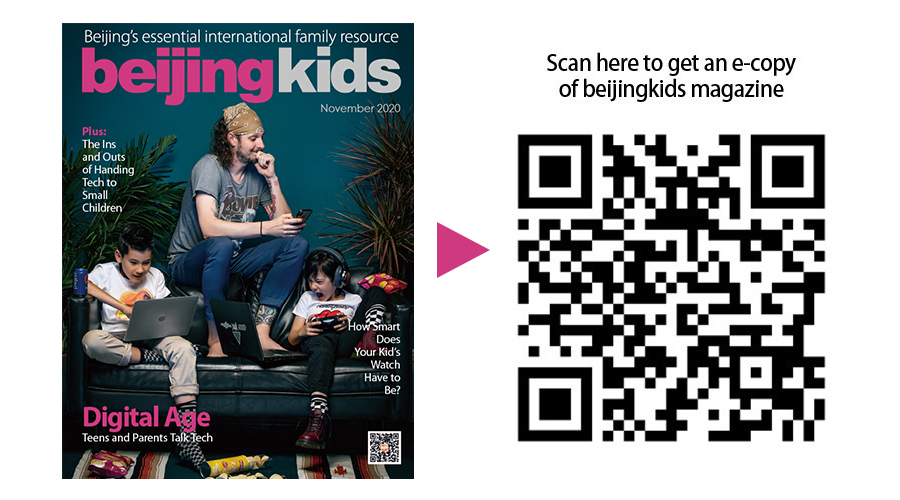 This article appeared in the beijingkids 2020 November issue
This article appeared in the beijingkids 2020 November issue




